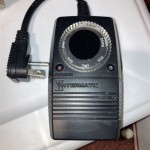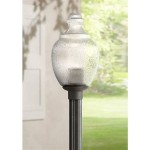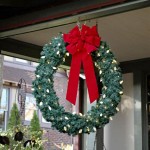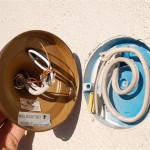Outdoor Weatherproof Light Fixtures: A Comprehensive Guide
Outdoor weatherproof light fixtures are essential components of a safe, functional, and aesthetically pleasing outdoor environment. These fixtures are specifically designed and constructed to withstand various environmental conditions, ensuring reliable illumination and contributing to the overall security and ambiance of residential and commercial properties. Understanding the features, types, and selection criteria of outdoor weatherproof light fixtures is crucial for making informed decisions and optimizing their performance.
The primary function of outdoor weatherproof lighting is to provide illumination in areas exposed to the elements. This includes pathways, patios, gardens, entryways, and building perimeters. Beyond mere illumination, these fixtures enhance safety by increasing visibility and deterring criminal activity. Furthermore, they contribute to the aesthetic appeal of a property, highlighting architectural features and landscape design. The long-term performance and durability of outdoor lighting depend significantly on its ability to resist the damaging effects of weather exposure.
Understanding Weatherproof Ratings: IP and UL
A critical aspect of selecting outdoor weatherproof light fixtures is understanding the ingress protection (IP) and Underwriters Laboratories (UL) ratings. These ratings provide standardized measures of a fixture's ability to resist the intrusion of solid objects and liquids. The IP rating, defined by the International Electrotechnical Commission (IEC) standard 60529, consists of two digits: the first digit indicates protection against solid objects (e.g., dust, tools), and the second digit indicates protection against liquids (e.g., rain, water jets, immersion). A higher number indicates greater protection.
For example, an IP65 rating signifies that the fixture is dust-tight (6) and protected against water jets from any direction (5). An IP67 rating indicates that the fixture is dust-tight (6) and protected against temporary immersion in water (7). Common IP ratings for outdoor lighting include IP44 (protected against splashing water), IP65, IP67, and IP68 (protected against continuous immersion in water). The specific IP rating required depends on the fixture's intended location and the level of exposure it will face. Fixtures located near bodies of water or in areas prone to heavy rain should have higher IP ratings.
UL listings, on the other hand, certify that a product has been tested and meets UL's stringent safety standards. While not a direct measure of weather resistance, a UL listing provides assurance that the fixture has been designed and manufactured to operate safely under specified conditions. UL standards relevant to outdoor lighting include UL 1598 (luminaires) and UL 8750 (light-emitting diode [LED] equipment for use in lighting products). UL also has specific listings for wet locations (requiring more stringent testing) and damp locations.
It is crucial to select fixtures with appropriate IP and UL ratings that match the intended environment and application. Choosing fixtures with inadequate protection can lead to premature failure, electrical hazards, and costly repairs. The ratings should be clearly indicated on the product packaging or specification sheet. Additionally, verifying the authenticity of certifications is recommended to ensure compliance with safety standards.
Types of Outdoor Weatherproof Light Fixtures
A diverse range of outdoor weatherproof light fixtures are available, each designed to suit specific architectural styles, functional requirements, and lighting needs. Common types include wall lights, post lights, path lights, floodlights, and landscape spotlights.
Wall lights are mounted on exterior walls, often flanking doorways or illuminating porches. They provide general illumination and enhance security. Post lights are typically installed on top of posts along driveways or walkways, offering both aesthetic appeal and functional lighting. Path lights are low-level fixtures used to illuminate pathways and garden areas, improving safety and creating visual interest. Floodlights provide broad, intense illumination for large areas, such as parking lots or building facades. Landscape spotlights are used to highlight specific features in a garden or landscape, such as trees, shrubs, or sculptures.
The selection of the appropriate fixture type depends on the desired lighting effect, the architectural style of the property, and the specific location. For example, a modern-style home might benefit from sleek, minimalist wall lights, while a traditional-style home might be better suited to ornate post lights. Similarly, a large parking lot would require powerful floodlights, while a small garden might only need subtle path lights and landscape spotlights.
Beyond the basic types, variations exist within each category. For example, wall lights can be uplights, downlights, or both. Post lights can be single-headed or multi-headed. Path lights can be bollard-style or mushroom-style. The specific features and designs of these variations should be considered to achieve the desired lighting outcome.
The materials used in the construction of outdoor weatherproof light fixtures also play a crucial role in their durability and appearance. Common materials include aluminum, stainless steel, copper, brass, and composite materials. Aluminum is lightweight and corrosion-resistant, making it a popular choice for many applications. Stainless steel offers exceptional strength and resistance to rust and corrosion. Copper and brass provide a classic, elegant look and are highly durable. Composite materials are often used for their weather resistance and cost-effectiveness.
Key Considerations When Selecting Outdoor Weatherproof Lighting
Selecting the right outdoor weatherproof light fixtures involves careful consideration of several key factors, including light output, energy efficiency, color temperature, and control options. The amount of light produced by a fixture is measured in lumens. The appropriate lumen output depends on the size of the area to be illuminated and the desired level of brightness. For example, a pathway light might require only a few hundred lumens, while a floodlight might need several thousand lumens.
Energy efficiency is an increasingly important consideration. LED fixtures are significantly more energy-efficient than traditional incandescent or halogen fixtures, consuming up to 80% less energy for the same light output. This translates to lower electricity bills and reduced environmental impact. Look for fixtures with high efficacy, measured in lumens per watt (lm/W). A higher efficacy indicates greater energy efficiency.
Color temperature, measured in Kelvin (K), describes the color of the light emitted by a fixture. Lower color temperatures (e.g., 2700K) produce a warm, yellowish light, while higher color temperatures (e.g., 5000K) produce a cool, bluish light. The appropriate color temperature depends on the desired ambiance and the specific application. Warm light is often preferred for residential settings, creating a cozy and inviting atmosphere. Cool light is often used in commercial settings, providing brighter and more focused illumination.
Control options allow for customized lighting schemes and energy savings. Common control options include timers, motion sensors, and dimmers. Timers can be used to automatically turn lights on and off at specific times. Motion sensors activate lights only when movement is detected, enhancing security and saving energy. Dimmers allow for adjusting the brightness of the lights, creating different moods and conserving energy.
The installation of outdoor weatherproof light fixtures should be performed by a qualified electrician to ensure safety and compliance with local electrical codes. Proper wiring, grounding, and sealing are essential for preventing electrical hazards and ensuring the long-term performance of the fixtures. Following the manufacturer's instructions is crucial for correct installation and maintenance.
Regular maintenance is also important for prolonging the lifespan of outdoor weatherproof light fixtures. This includes cleaning the fixtures to remove dirt and debris, checking for any signs of damage or corrosion, and replacing bulbs or LEDs as needed. Proper maintenance not only ensures optimal performance but also helps to prevent costly repairs in the future.
The aesthetic considerations in selecting outdoor lighting are as important as technical specs. Style, finish and overall design of the fixture should complement the architecture of the property as well as the surrounding landscape. Consideration of the existing color scheme or the desire for a unified appearance should play a role in the selection process. The purpose of illumination should always be considered. Is it for security, safety, or for a pleasing aesthetic? The desired ambiance and impact should guide the overall decision. Fixtures that are too bright or too dim can detract from the user experience and waste energy.

Avenila Led Outdoor Waterproof Modern Wall Light 2w 4w 6w 8w 12w

12w Led Cross Laser Outdoor Waterproof Exterior Wall Step Up Down Left Right Light Fixture Lamp Black Finish Warm White Ashish Electrical

Dmak 4 Way Led Outdoor Waterproof Exterior Wall Light Fixture

Modern Aluminium Outdoor Waterproof Wall Light E27 Lamp Ip65 Cylinder Mounted Up And Down Sconce Lamps China Led Rgb Made In Com

Outdoor Wall Light Fixture Black Exterior Waterproof Lights Mount With Glass Shade Warm White Ashish Electrical

Pia Ricco Outdoor Wall Light 1 Black Exterior Waterproof Sconce Fixture 1jay 12219 The Home Depot

Inowel Outdoor Wall Sconce Light Exterior Ip54 Waterproof Led Fixture Porch Mount Lamp Lantern Black Aluminum For Patio Garage Hou In 2024 Modern Lighting

Weatherproof Led Light Fixtures Crouse Hinds Series Eaton

Waterproof Linear Led Light Bar Fixture 195 Lm Ft 1ft 2ft Super Bright Leds

Dusk To Dawn Motion Sensor Outdoor Porch Lights With Gfci Waterproof Light Fixture Anti Rust Exterior Wall Mount 3 Modes For House Garage Bulb Not Included Com
Related Posts







